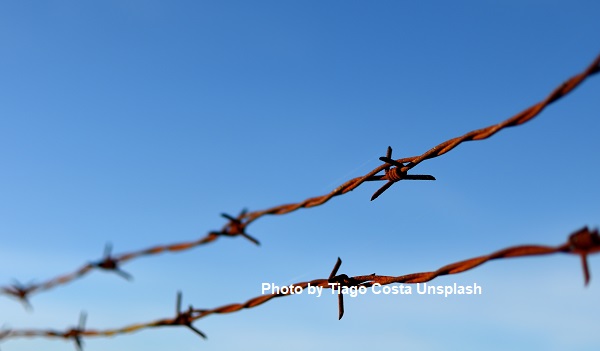Life-threatening conditions for people stuck along the EU’s eastern borders have cost the eighth life since the stand-off with Belarus began in August. In Warsaw, protesters have rallied against violent pushbacks by Polish officials. Latvia, Lithuania and Poland continue to deploy troops and fortify their borders with Belarus. As states of emergency restrict humanitarian access, citizens and NGOs are stepping in to fill the gap. Germany cites increased border crossings and plans joint patrols at the Polish-German border.
The dire humanitarian situation in the EU eastern border zone dates back to August, when Belarus promised crisis regions to the EU border. Poland has responded by violently forcing people back to Belarusian territory, passing legislation allowing for the expulsion of people seeking asylum and planning a 353 million euro border wall. On 20 October, police and border guards reported finding the dead body of a 19-year-old Syrian man in the Bug river at the border. They claim the man was pushed into the river by Belarusian security forces. Eight people have lost their lives in the standoff between the EU and Belarus since the summer, according to state authorities.
Also on 20 October, a group of people trapped between hostile Belarusian and Polish border forces for two months attempted to break through the barbed wire fencing to reach Poland. According to NGO Ocalenie Foundation, 17 people were apprehended and expelled: some were gassed and pulled through mud. The same day, an Iraqi woman who gave birth to a baby in the forest was brought to a hospital in Sokolka, Poland. Three days prior, thousands of people in Warsaw attended a rally against pushbacks and inhumane treatment at the Polish-Belarusian border. The peaceful demonstrators held placards reading “stop the policy of cruelty and death” and “stop torture at the border”. Some held banners made of thermal blankets, symbolising the serious risk of death by hypothermia for the people sleeping rough in forests where temperatures reach below zero.
Latvia, Lithuania and Poland continue to refer to the increased arrivals as a “hybrid attack” and have sought to militarise their borders in response. On 19 October Poland’s Defence Minister Mariusz Blaszczak said the country had deployed “almost 6,000 soldiers” along the Polish-Belarusian border. This represents a doubling of the 3,000 troops that were present only three days earlier. The government reported 612 attempts to cross the border on 18 October alone, and a total of 9,600 since the start of the month. Lithuania’s interior minister, Agne Bilotaite, announced that the state would add up to 64 soldiers a day to reinforce its own border with Belarus. Bilotaite has claimed that up 7,000 people are waiting to cross into the EU, but admits that this figure is wholly unconfirmed. Lithuania has also called on the EU to sanction airlines flying to Minsk and block them from EU airspace. This demand responds to Europol reports that Belarus is orchestrating flights from Damascus and providing visas to Pakistani, Egyptian and Jordanian nationals.
Latvia has extended the state of emergency at the border until 10 February 2022. The interior ministry justified the measure on the basis that 1,800 people have been stopped while attempting to cross into the EU via Latvia. The Latvian state of emergency was first imposed on 11 August alongside efforts to roll out barbed wire across sections of the frontier, a process that is due to be completed in mid-November. Latvia, Lithuania and Poland have all declared emergencies at the border which allow them to derogate from human rights instruments and heavily restrict media access. In Poland, humanitarian groups are also entirely blocked from accessing the zone, with the exception of the Polish Red Cross. Medical volunteer team Medycy Na Granicy have sent a statement to the Polish government asking anew for immediate access to the zone in order to save lives. Caritas Poland meanwhile has mobilised local dioceses in the state of emergency zone to act as “aid points” that provide backpacks with thermal blankets, energy bars and water. Local citizens have also found ways to help people in need: one grassroots initiative calls on people living near the border to switch on a green light outside their homes to signal that they can provide migrants with a hot meal or change of clothes.
German officials report increased numbers of border crossings from Poland, with some media saying that up to 150 people per night are arriving to Eisenhuettenstadt, a German camp near the Polish border. According to authorities, 392 people entered Germany on 9-10 October, while over 2,600 had thus entered the country this year up to 10 October. Heiko Teggatz, head of the Federal Police Union, said 5,000 border-crossers have been detained in recent months, including 500 over the weekend of 16-17 October. According to Teggatz, “the number of [irregular entries] detected has been rising almost explosively for months.” In response, Germany has offered to send officers to support joint patrols at the border with Poland, though the interior minister has ruled out border closures for the time being. Germany has however long since been the top destination for people seeking protection in Europe. By the end of September, 100,000 people had sought asylum in the country. This is a 35.5% increase on the year prior: 2020 figures were however affected by the global pandemic. 57% of initial applications this year came from Syria, while authorities also observed a sharp rise in Afghan applicants, suggesting many of those arriving irregularly fit the criteria for protection status under EU law.
For further information:
- ECRE, Poland: Parliament Approves ‘Legalisation’ of Pushbacks, Council of Ministers Adopt Bill to Construct Border Wall, Another Life is Lost at Border with Belarus, October 2021
- ECRE, Lithuania: Frontex Serious Incident Reports Multiply, Stranded People Suffer at the Border, Camps Improved with EU Funding, Twelve States Ask EU to Fund Fences, October 2021
Photo by Tiago Costa on Unsplash
This article appeared in the ECRE Weekly Bulletin. You can subscribe to the Weekly Bulletin here.

